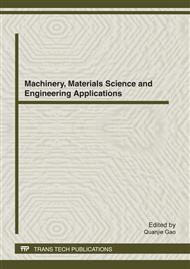p.609
p.614
p.619
p.623
p.628
p.634
p.639
p.645
p.650
Evolution of the Plastic Deformation Mechanisms in a Compressed Mg-10Gd-2Y-0.5Zr Alloy
Abstract:
This paper investigates the evolution of the deformation mechanisms in a homogenized Mg-10Gd-2Y-0.5Zr alloy ingot compressed at 300-500 °C and 0.1-20 s-1. It can be found that the basal slip and mechanical twinning are the major deformation mechanisms in the alloy compressed at 300 and 0.1-20 s-1. Increasing the testing temperature to 350 °C, basal slip, non-basal slip and mechanical twinning control the plastic deformation of the alloy compressed at 0.1-20 s-1. When the testing temperatures increase further to 400-500 °C, the mechanical twinning is replaced gradually by the local shear bands which are formed by dynamic recrystallization (DRX) grains (referred as transformation bands). The transformation bands have the trend to form the typical DRX microstructure with increasing the temperatures (might be caused by increasing testing temperatures or strain rates). Besides, the transformation bands can also be found in the sample compressed at 350 °C and 20 s-1 when the temperature in the deformation alloy is high enough to activate non-basal slip and form DRX grains at local zone.
Info:
Periodical:
Pages:
628-633
Citation:
Online since:
April 2012
Authors:
Price:
Сopyright:
© 2012 Trans Tech Publications Ltd. All Rights Reserved
Share:
Citation:


